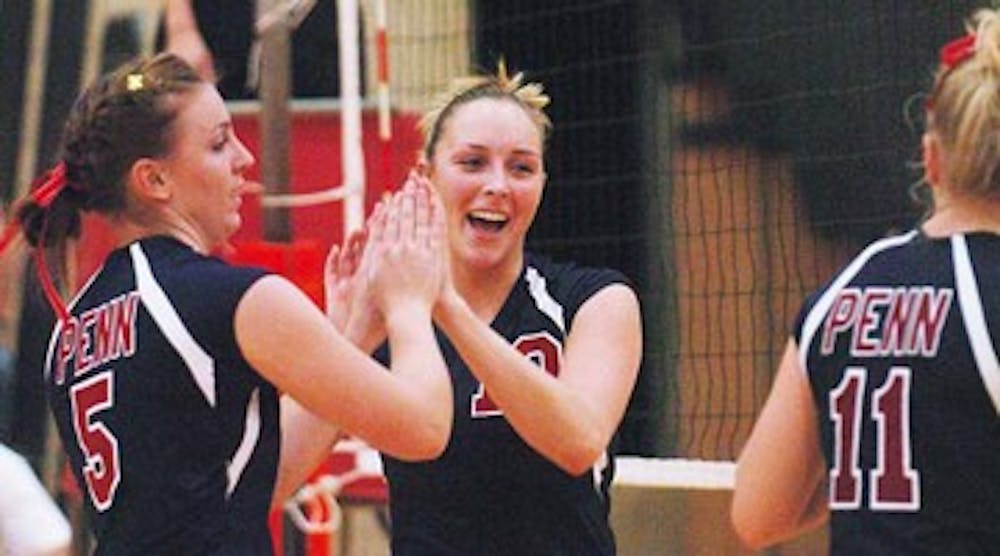
Outside hitter Laura Black spikes a ball wide. But she has no time to hang her head - it's time for one of the Penn volleyball team's many cheers.
After every point, win or lose, the six players meet in the middle of the court and do some sort of jig and chant. Exactly what moves they produce depends on the team, the point and a bit of personal flair.
"If you don't win the point you want to get your team together and get back in the groove," Black said. "You don't just want to stand around dwelling on the error."
Before a typical best-of-five match ends - each game can contain almost 60 points - the women may go through 200 or more of these rituals.
"We really just do it to keep the energy up between points before the ball is served," Black said.
But what started as an in-game strategy has morphed into a game of its own. While Penn's cheers are not too outlandish - their most complicated move is a personalized shimmy after a kill - some teams go out of their way to make things a little more complex.
"We've seen people diving on the ground and doing rolls in the middle of the point," Black said. "It's a bit excessive. I think keeping it simple is the best way to go."
Villanova rookie head coach Josh Steinbach recalled a particular opponent that would incite his team with their antics.
"A couple of years back there was a team that used to chest bump after points," Steinbach said. "The girls on my team would always get mad and say, 'Let's keep them from chest bumping the rest of the game.'"
The choreography might seem like a lot to handle for a newcomer, but Black insists that all the freshman need is a quick tutorial. High-school and club teams are known to have even more elaborate dances, so the transition isn't usually too big of a project for newcomers.
There's also the element of sportsmanship to consider. Showing up a pitcher in baseball can earn you a 90-mile-per-hour fastball at your midsection. In the NFL, an excessive touchdown celebration can cost a player thousands of dollars and even earn his team a sizable in-game penalty.
Without any such regulation, volleyball players have to rely solely on tact.
"It's hard to watch [a team] celebrate when you did something wrong," Steinbach said. "But for the most part they are pretty tasteful."
Opponents certainly take notice of the other team's dances. The Quakers' own kill cheer was lifted, in part, from the cross-town Wildcats.
"We thought their shimmying was really funny so we wanted to incorporate it," junior hitter Stephanie Gwin said. The thievery took place back in 2005 and has been a staple of the kill cheer ever since.
Of course, tastefulness and creativity are not mutually exclusive endeavors. After an ace you can look for the Penn team to congregate in the middle of the Palestra court. After screaming "Ahh. ace!," what happens next is anyone's guess.
"We do a little dance," Gwin said. "When we first started doing it people put their butts in the middle and danced, but now it's any goofy dance. People do their own thing."
Still, this is not to say that players don't take their dances seriously.
"I was joking with one of our players that she jumps higher during celebrations than [she does] when we are playing," Steinbach said.
So it appears that the textbook volleyball phrase "bump, set, spike" may need to be amended a bit.
It's really "bump, set, spike - cheer."
The Daily Pennsylvanian is an independent, student-run newspaper. Please consider making a donation to support the coverage that shapes the University. Your generosity ensures a future of strong journalism at Penn.
DonatePlease note All comments are eligible for publication in The Daily Pennsylvanian.







